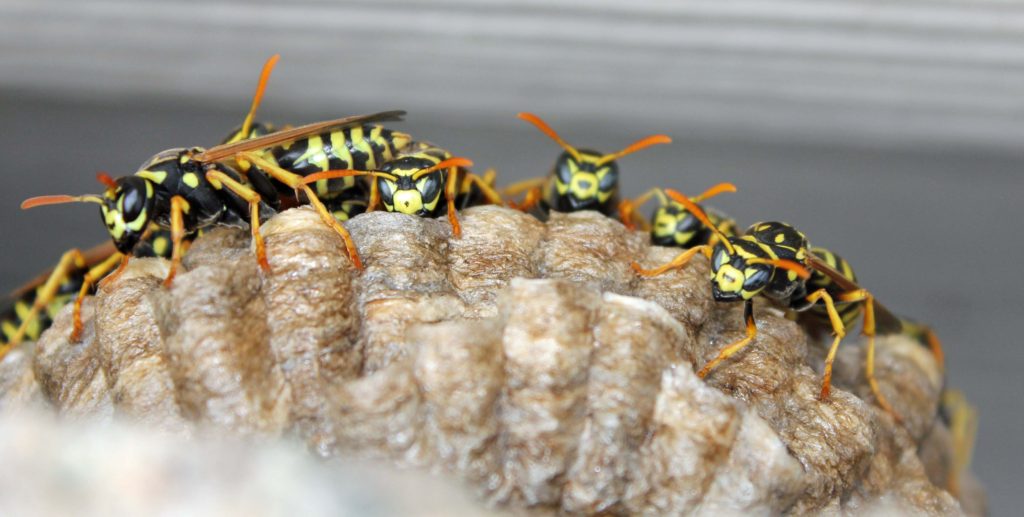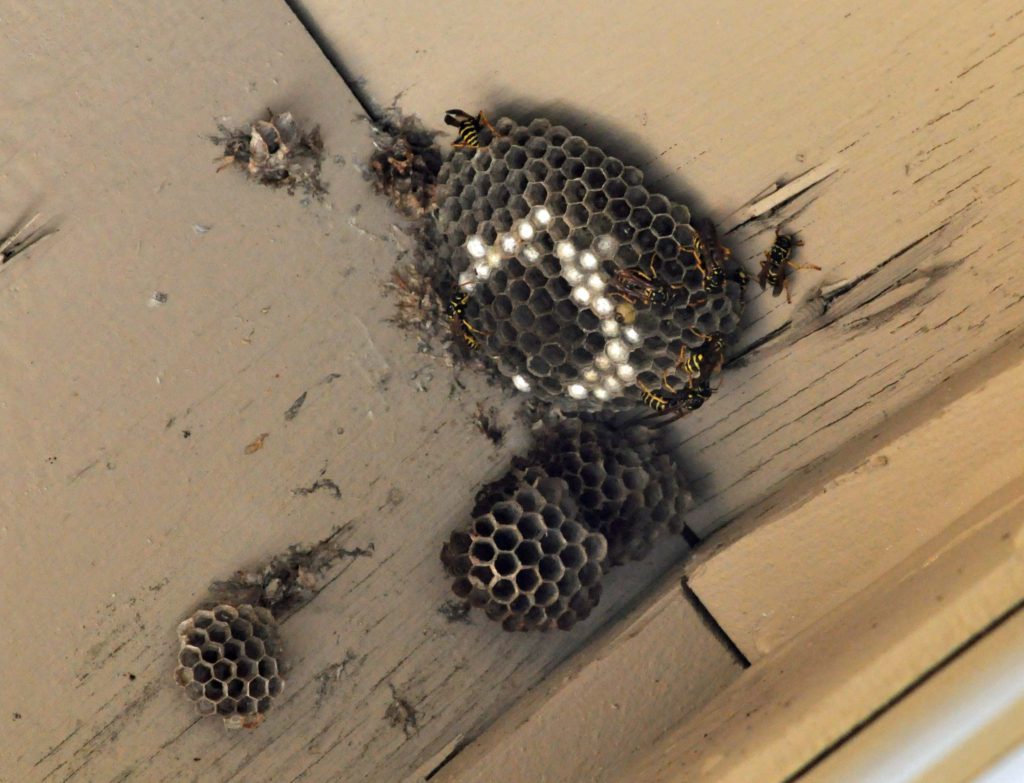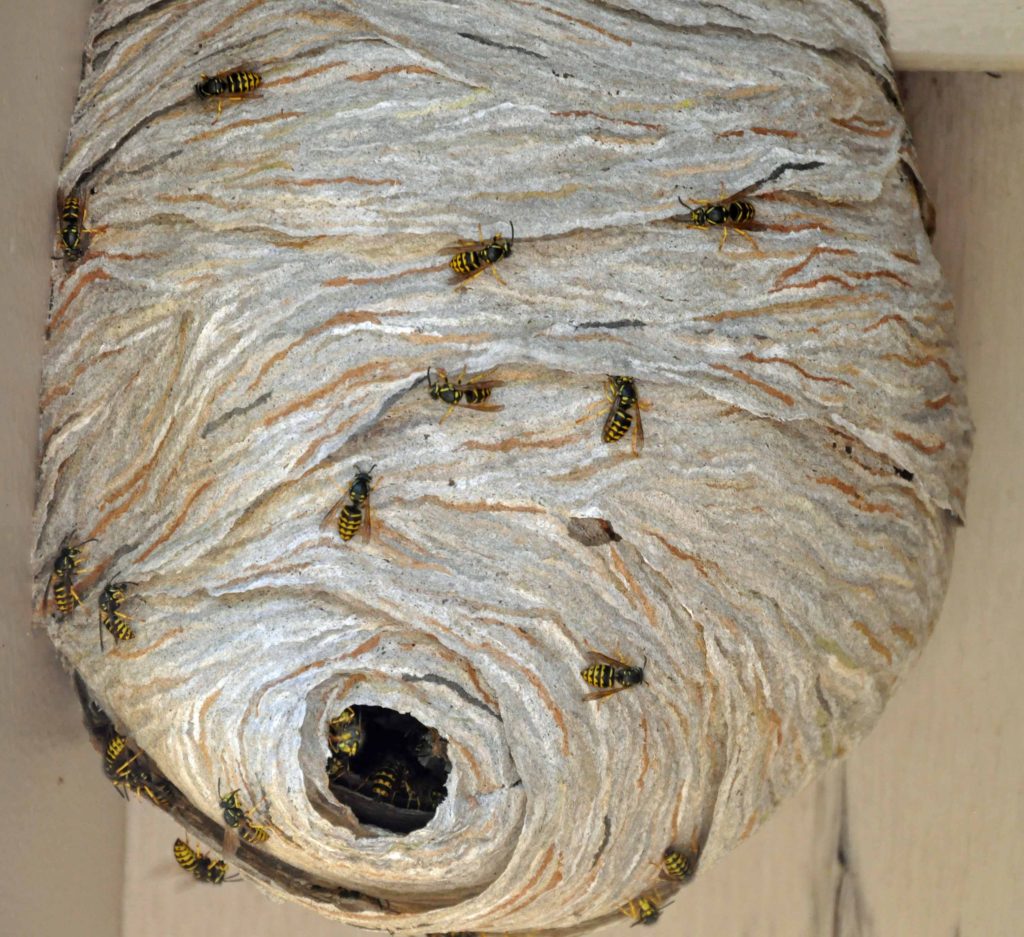If you’re like me and have a hummingbird feeder (or three) you will more than likely notice a wasp or two buzzing around it annoying the hummers. What you are seeing is probably either a Paper Wasp or a Bald-faced Hornet. Common throughout America the Paper Wasp gets its name due to its papery appearing nest; Bald faced Hornets due to their distinct white facial markings. That name, however, is a bit deceptive as this “hornet” actually a member of the yellow jacket wasp family and not a real hornet. At one to two inches long, hornets are larger than wasps. Paper wasps of the genus Polistes comes to us in several species, the most common of which is the one we see quite often in the Northwest, Polistes fuscatus. Although a bit larger than Bald-face Hornets, Paper Wasps have a reputation for being fairly mild mannered compared to their other wasp cousins, but they can be irritated and it is no fun to be stung by one so don’t push your luck. Paper Wasp nests are often found up under the eves of homes or some other overhanging shelter. Their nests are not very large and is actually not as “papery” as the big rounded ones of the Bald-faced Hornet. Bald-faced Hornets prefer trees but they are not adverse to building a home under your eves and there is no mistaking one of those hanging under your roof. This smaller Paper Wasp nest holds an advantage for us human observers because you can easily look inside and see what’s going on thanks to its open to the public construction; and these wasps are normally laid back enough to let you do it. Be careful trying that with a Bald-faced Hornet. Their nests are distinctly different but both species have very similar feeding habits. Primarily to feed their larvae Paper Wasps and Bald-faced Hornets hunt other insects for food. In this respect they may very well be considered your partners in pest control. Adults have a taste for flower nectar and fruit juices, however, hence their attraction to your hummingbird feeder. By the way, are those nests really made of paper? Actually yes. It is made of wood pulp mixed with the saliva of the wasp.
References:
The Audubon Society Field Guide to North American Insects and Spiders by Lorus and Margery Milne, 1980
National Wildlife Federation Field Guide to Insects and Spiders of North America by Arthur V. Evans, 2008
Garden Insects of North America by Whitney Cranshaw, 2004
Bugs of Washington and Oregon by John Acorn, 2001
The three hummingbird feeders hanging over my back deck.
<
>




Leave a Reply
You must be logged in to post a comment.